Many things that were once commonplace, today, we now hold dear for their rarity. Such things as having a live and informed person respond quickly when we call customer service, or an auto parts store owned by a family not a franchise or a gas station attendant not speaking on an ear bud to a friend 10,000 miles away, all were once accepted as a given.
Now for those of us old enough to remember a time when superior craftsmanship merited respect and a plentitude of business, we sadly note the dwindling presence of those practicing craftsmen. That so few of these skilled experts at combining art and engineering exist seems incomprehensible in a way that shocks our sensibilities.
Drivin’ News believes in the importance of recognizing the remaining gifted and dedicated craftsmen who sustain our passion for the enjoyment and preservation of classic vehicles. Meet Charlie Olsen, owner of Olsen Engines.
The man they trust to rebuild history
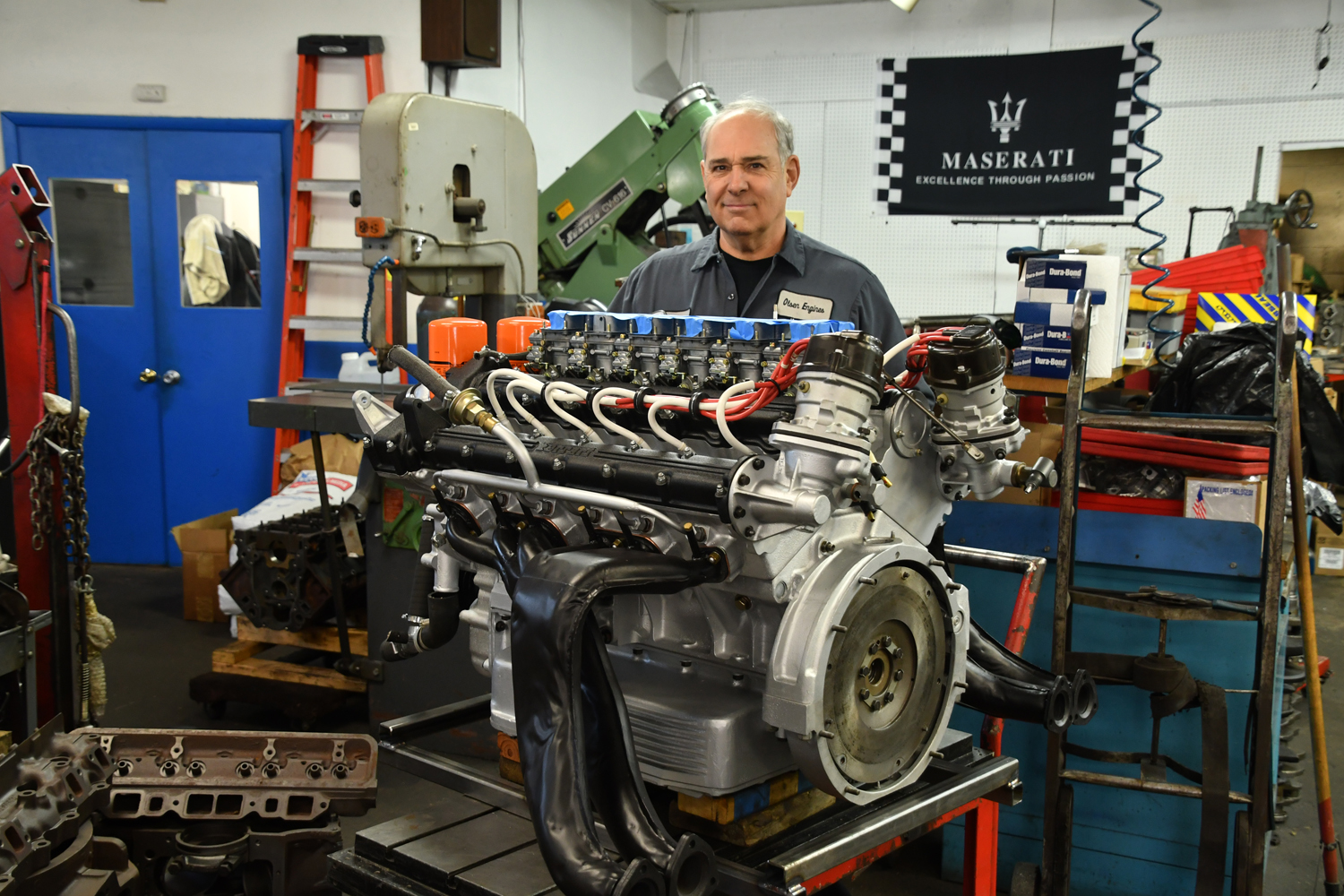
Charlie Olsen with Ferrari Daytona engine
Disarmingly genial and engaging, Charlie Olsen resides within the sparse ranks populating the pantheon of active “go-to” machinists and classic vehicle engine rebuilders.

Charlie Olsen working on Honda 250cc engine
Though chockablock with exotic engines, parts and pieces, Charlie’s Olsen Engines shop somehow projects a reassuring sense of confident orderliness. Since opening for business in 1982 Olsen Engines, has been entrusted by some of the world’s most famous people and most respected professionals to work on some of the world’s most treasured automobile, motorcycle and inboard marine engines.
Maintaining a shockingly youthful exuberance for his passion to bring mortally wounded high performance and exotic engines back from the dead, 67-year old Charlie was born to excel at the work he loves.
Charlie says, “I always had a love for gas engines. By eight or nine-years old I was fixing all of the lawn mowers on the block.” If he found a mower that did not run, he would make it run. By the age of twelve Charlie had graduated to motorcycles. He says, “I bought some old cycles cheap and got them to run.” From then on Charlie’s budding talents for curing the ills of anything that ran on gas blossomed into full bloom.
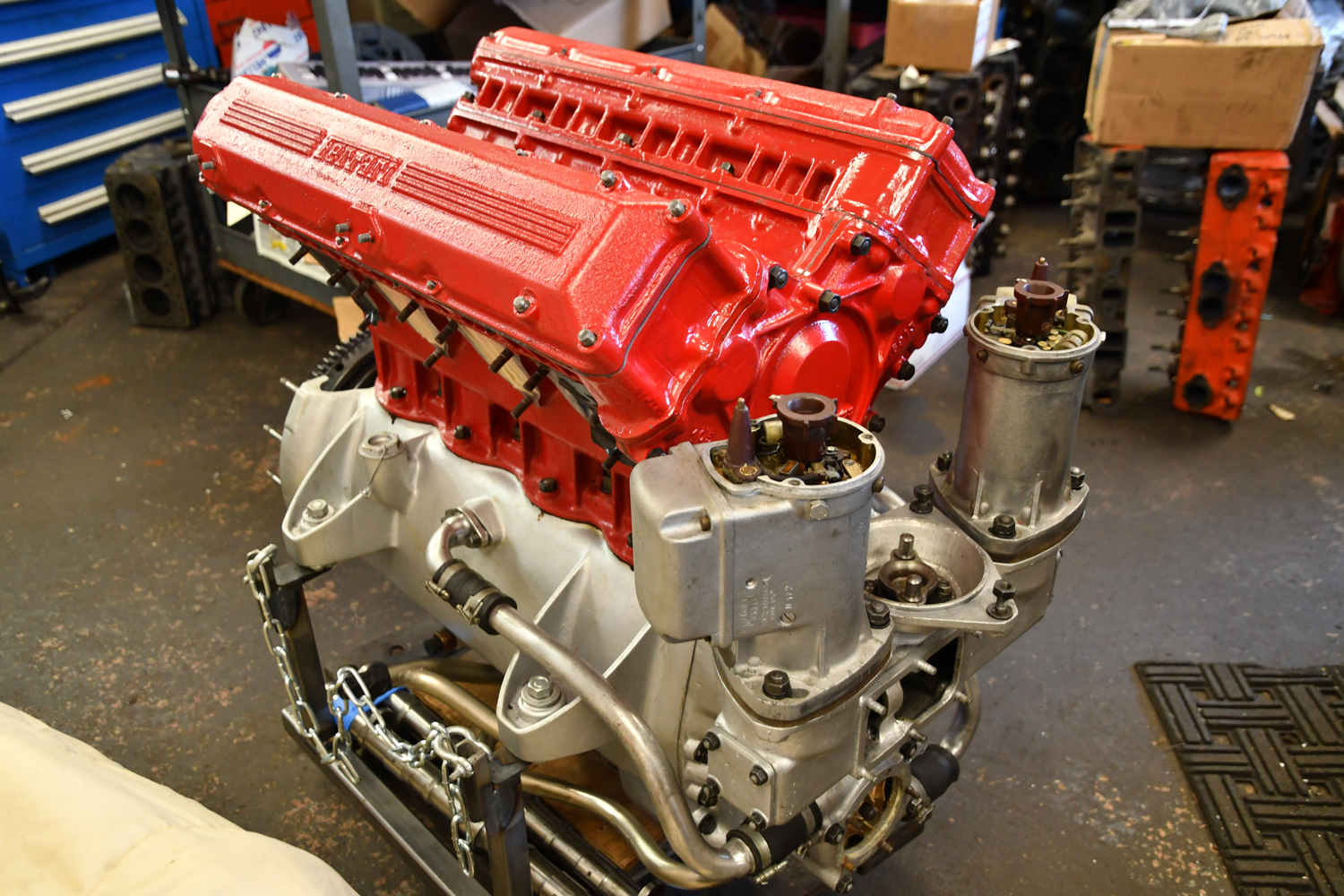
Ferrari 4-Cylinder
In high school a stint at a local gas station exposed him to the challenges of rebuilding transmissions. He excelled. By 1976 Charlie’s employer at the time, Competition Research of Nyack, New York, closed and a Suzuki dealership took its placed. Charlie accepted the new owner’s invitation to stay and took the opportunity to work on the dealership’s motorcycles and the cars that the owner raced. The experience allowed Charlie to hone his engine rebuilding skills. When the Suzuki dealership closed in 1982, Charlie took over the facility, opened Olsen Engines and the rest is history.
When entering Charlie’s shop one never knows what museum worthy piece of motoring history will be awaiting final touches in advance of shipping. On one prior visit when I was bringing the heads for my 1961 Corvette small block to be rebuilt, I spotted three extraordinary and completed engines poised to bring to life significant examples of the mid-twentieth century’s golden age of motoring.
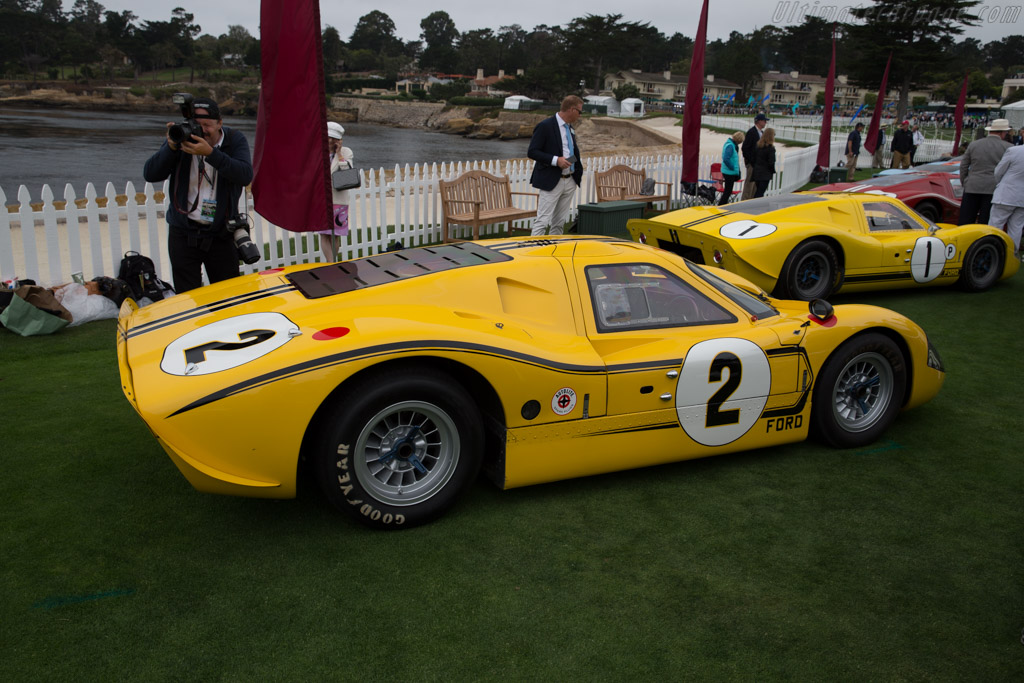
Glickenhaus GT40
All painted, plated and perfect, there sat a 1972 V-12 for a Ferrari 365 GTB/4 Daytona, a 331 cu. in. hemi for the first Chrysler 300 and a truly rare Aurelio Lampredi designed dual distributor 4-cylinder for a mid-fifties Ferrari 750 Monza. For Olsen, these extraordinary power plants intended for automotive royalty represented just another day. More about these gems later.
Emblematic of Charlie’s easy going self-effacing nature, he explains his philosophy saying, “I just try to do it as best as I can, maybe try to do it even better than I have done it before. Certainly I want to do it better than anyone else.”
When asked about the difficulty of working on a vintage engine that he may never have seen before, Charlie’s response innocently betrays his humility in addressing how his natural gifts,
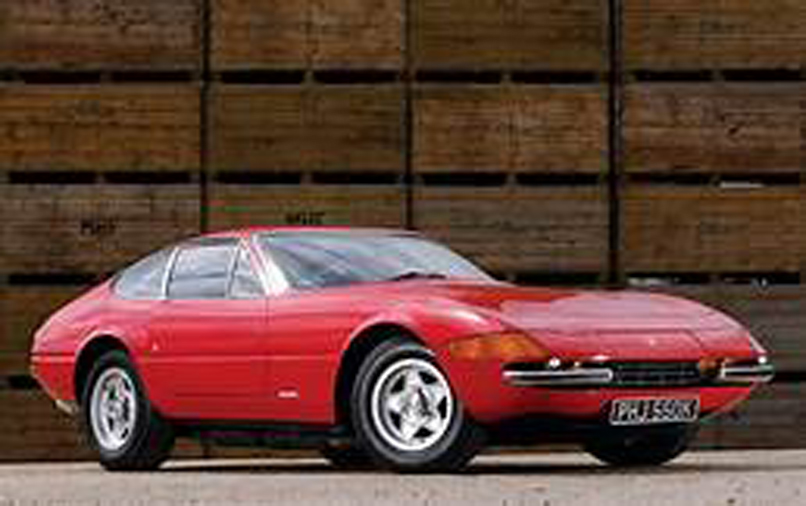
Ferrari Daytona
years of experience and work ethic inform his approach to accurately resurrecting a piece of engineering history.
He says, “It is all about paying attention to detail.” He speaks about the existence of subtle nuances present with every engine. He says, “If you know of them it becomes mechanical. You can figure it out. After all a four-stroke engine is a four-stroke engine.”
When asked about the kind of nuances other people might miss Charlie easily rolls off a litany of subtle yet meaningful attributes. They include cylinder wall finish, honing procedures, valve guide material, valve seat material, material used in cylinder heads, fastener torque, sizing for crank bearings and roundness of main bores and rod bores.
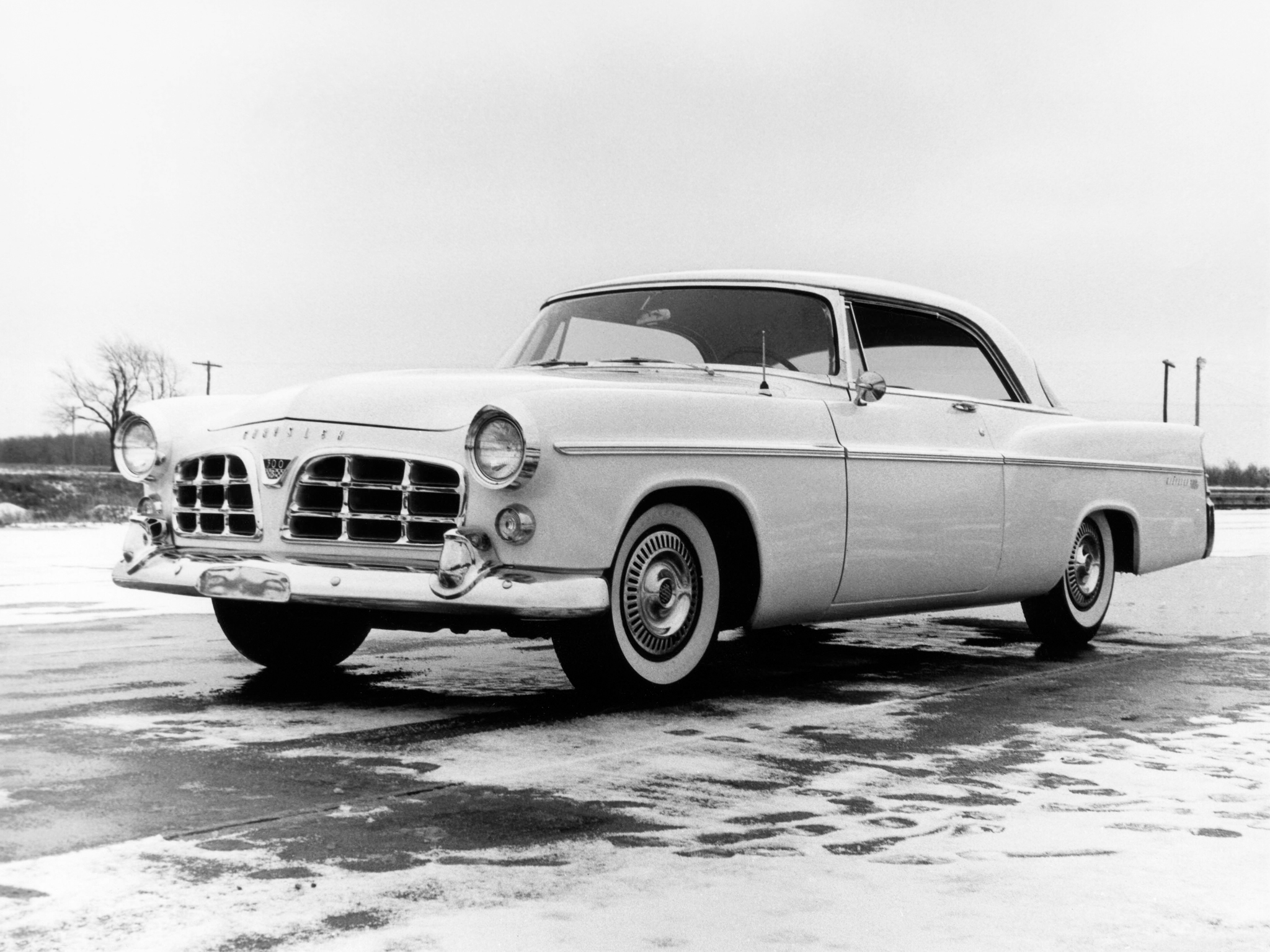
Chrysler 300
In applying his expertise for famous restoration shops and famous people like Billy Joel, Jim Glickenhaus (Glickenhaus Collection), Craig
Jackson (Barrett-Jackson), Ralph Lauren, Michael Strahan and David Letterman among many others, Charlie has put his stamp on extraordinary milestones in automotive history.
Over its almost 40 years in business, Olsen Engines has seen a wide diversity of exotic and historically significant engines pass through the hands of Charlie. The following examples offer a taste of the performance bounty that has benefitted from Charlie’s touch.
1966 Ford GT40
In sorting out the exact provenance, it has been represented that this big block GT40 identified
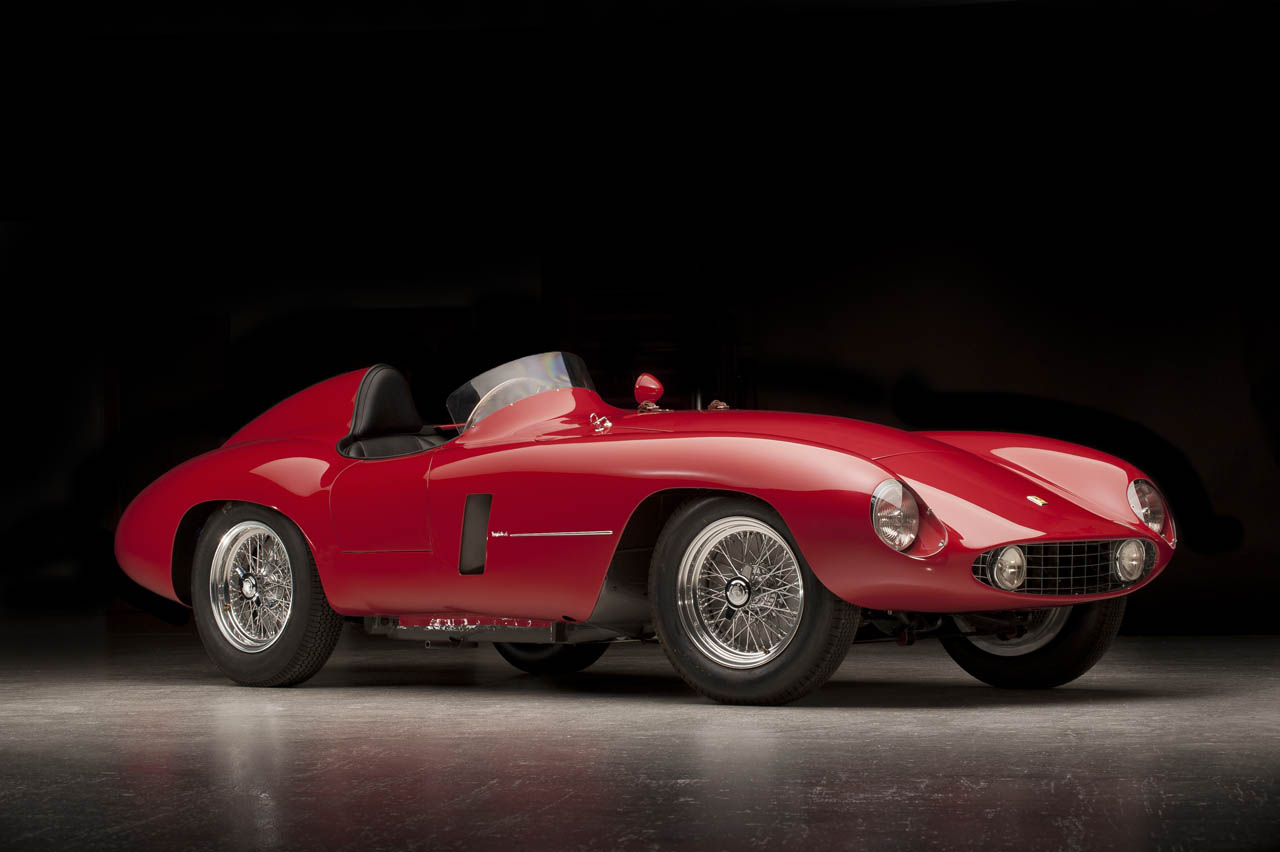
Ferrari 750 Monza
as car #4 was one of the three that finished one, two, three at LeMans in 1966. Later research may have indicated that it was one that ran in 1967. At that time of the rebuild it was the only one of the GT40s that had the engine rebuilt. It had been sent to Charlie to do balance work, crank work and block work
Mid-1950s Ferrari 750 Monza
Though a 3-liter 4-cylinder, the engine was a strong performer that ran nearly as fast as the V-12 cars. Charlie says, “I just did the top end. I was getting the clearances right on the bevel drive for the whole front of the engine with the bevel drive operating the generator and both distributors. That engine had two distributors. Finally I had to set up the valve clearances.
That engine was pretty different because it’s a roller cam. It was something I had never come across before.”

Vector
1955 Chrysler 300
Charlie has done a number of early hemis. He says, “They have their idiosyncrasies, a couple of little oiling issues and strength issues.” For the most part the ones he has done were rebuilt for stock performance.
Ferrari 166M
Powering a very rare Ferrari, this engine comes from a late 1940’s model produced before Enzo Ferrari got into the street car business. With a 2-liter Colombo V-12, It’s intention was for racing in events such as the Mille Miglia. Charlie says, “The small bore, small stroke Colombo engine was quite interesting.”
The old Colombo style valve springs on it offered a very unusual “mousetrap” design.

Ferrari 166M
It differs from your usual coil because the spring has two arms that come around to hold the valve up.
1990s Vector
Currently Charlie has turned his attention to the engine of a very interesting rare supercar from the early 1990s, a Vector. The 358 cu.in. fuel injected Chevrolet power plant features a twin-turbocharged design. Charlie says, “ I think there may only be 10 or so of these cars in existence.”
Honda 250cc motorcycle engine
This six cylinder motorcycle engine represents one of only three made and the only one not in the Honda museum.
Raced in 250cc class and GP motorcycle racing during the early 1970s, it is a 250cc, 6-cylinder, four-valves per cylinder engine with a 7-speed transmission. It idles at about 11,000 RPM and will run up to seventeen or eighteen thousand RPMs.
Big Block Grenades
Charlie has done his part for outrageous engines with four figure horsepower builds. He built a number of 2,000 HP turbocharged and blown race engines for Camaros and Mustangs. However, his most vivid description of work he did he describes as “Big Block Grenades.”
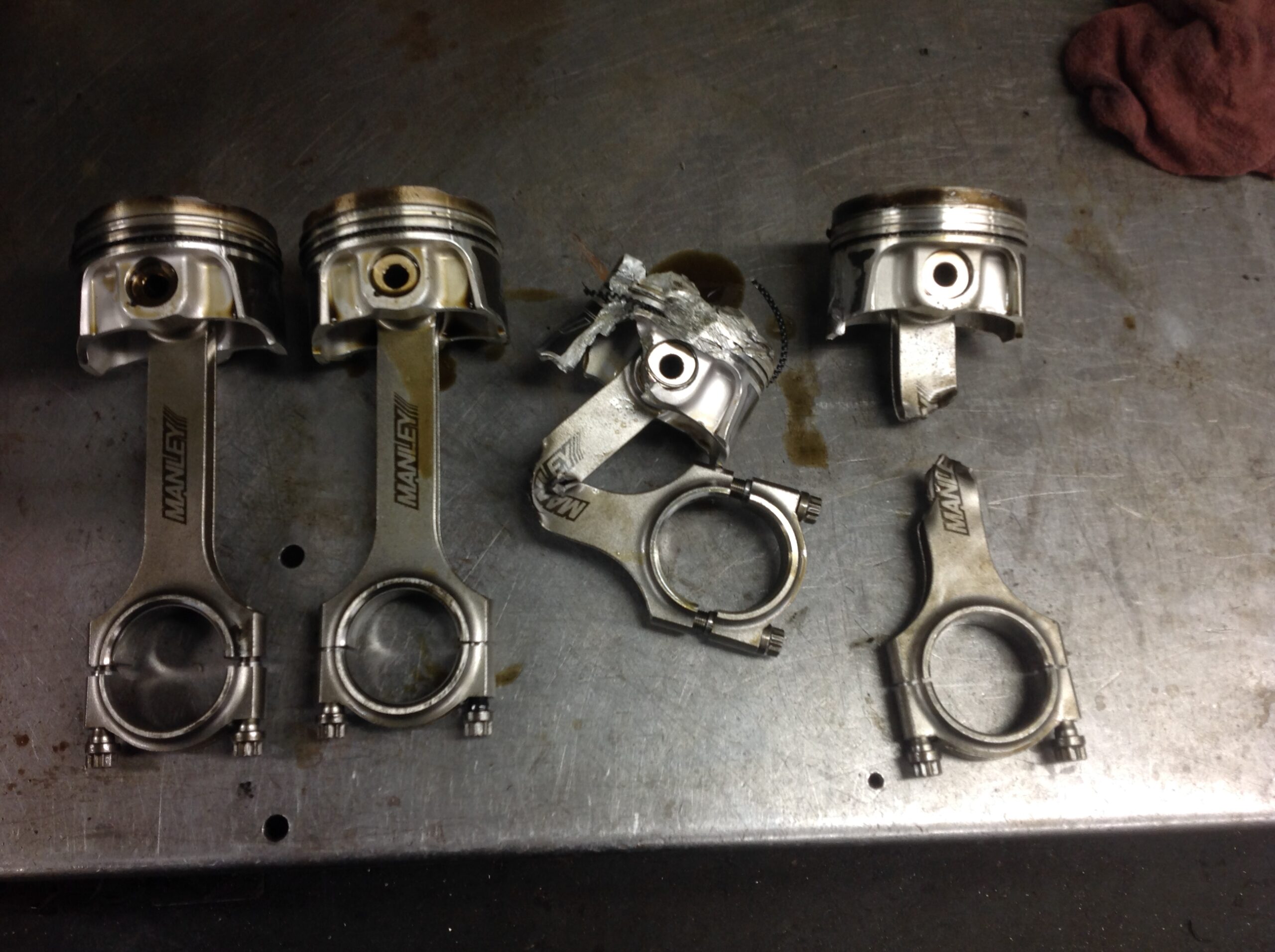
Reasons for a rebuild
Charlie recalls in the 1990s how clients for really high horsepower drag race engines wanted to have 4 to 6 thousandths of main clearance. Charlie recalls, “The customers wanted to have a bit more freedom to allow things to move around inside the engine.” Charlie continues, “ I would take these engines apart and you could just see how hard the engines had been working.” At the most these engines stood to hold up for 10 to maximum 20 runs.
Often in engine building the topic of balancing and blueprinting comes up. Charlie certainly shared some interesting insights. He says, “Back in the 1980s when I was running in the IMSA Fire Hawk series I could go through blue printing processes on a 305 cu. in. 200 HP Chevy small block and get an additional 125 HP without changing any parts.” It simply stood as a matter of maximizing compression within the rules and getting all cylinders equal. He did a lot of flow test work to achieve that balance.
Balancing called for individually balancing all rotating and reciprocating parts both statically and dynamically for the smoothest possible operation. Blueprinting called for rebuilding an engine to the precise OEM specs by re-machining each component to the precise measurement in the factory blueprint.
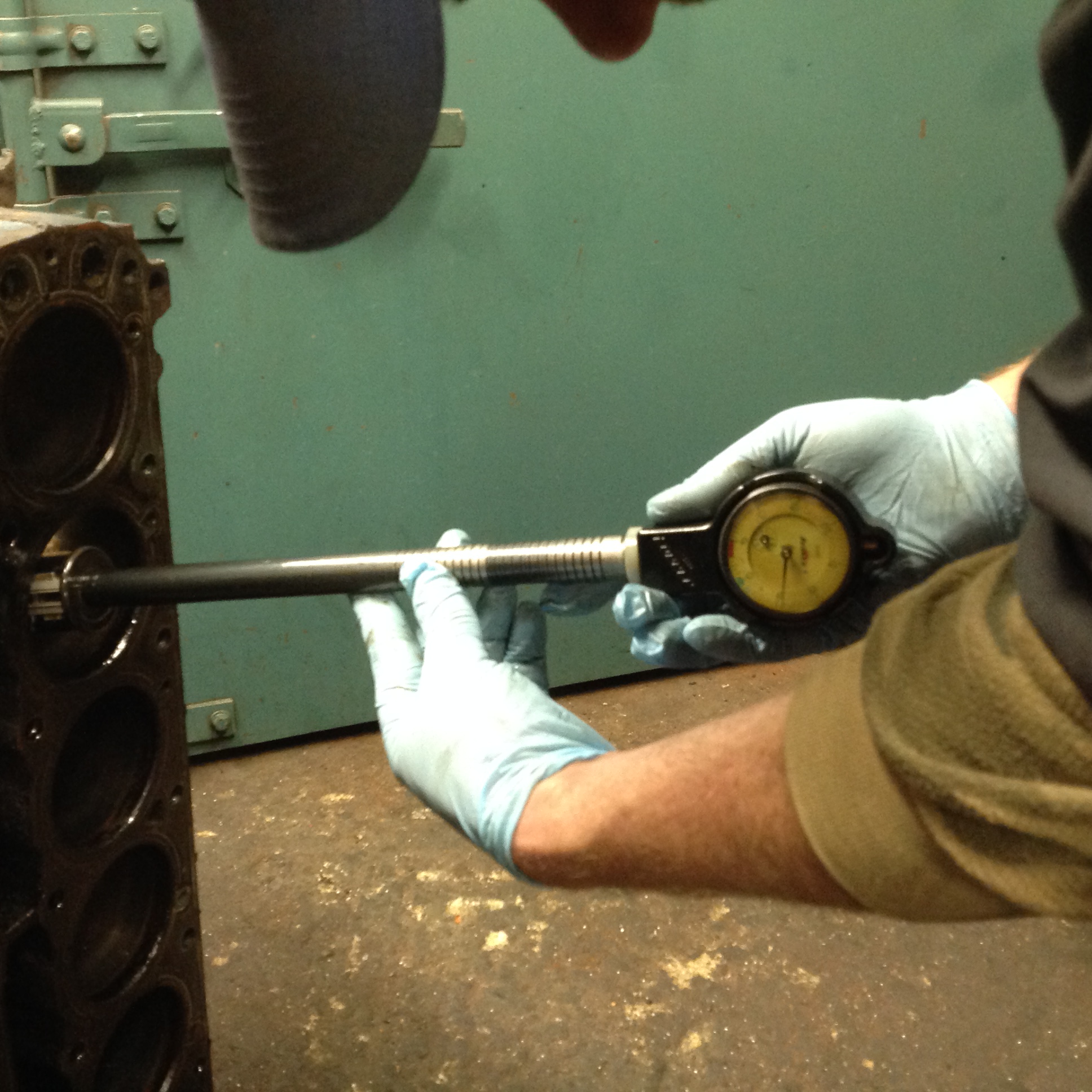 In discussing engine rebuilding for 21st century modern engines Charlie says, He does not recommend rebuilding an engine for a stock production vehicle. He recommends simply buying a new engine.” Interestingly Charlie says that OEM production techniques have improved so much that modern engines are close to blueprint quality due to the superior production and inspection technology used today.
In discussing engine rebuilding for 21st century modern engines Charlie says, He does not recommend rebuilding an engine for a stock production vehicle. He recommends simply buying a new engine.” Interestingly Charlie says that OEM production techniques have improved so much that modern engines are close to blueprint quality due to the superior production and inspection technology used today.
In reflecting on the his ongoing goals Charlie says, “I hope I never stop learning. I hope that I can always keep trying to improve so that my engine work reflects the pinnacle of my capabilities.” Smiling and showing a sliver of self-satisfaction Charlie says, “I just love it. It’s a passion.”
In reflecting on his future Charlie says, “I’m thinking about slowing down a little bit and maybe just taking on, you know, a couple of projects a year. However, I don’t think I’m gonna ever stop as long as I am capable of doing the work.” Flashing a big grateful smile He says, “I just love the diversity of all the different engines that I get to work on. Almost every day I get something unique come through the door.”
While Charlie acknowledges that what he does can be taught, he clearly believes that, like the art of great musicians, much of the magic he brings to his work is realized through gifts with which he was born.
Undeniably, audiences of classic car owners and drivers revere the tune that an engine rebuilt by Charlie Olsen sings on open roads and closed tracks alike.

This really has to be the finest piece you have put up! Charlie Olsen may only regret having cooperated with you, because his shop will be too full of new fans to allow him to do any work! He clearly is a very talented man who loves his work. And it would certainly appear he does a very good job of it!
If Charlie decides to put down his wrenches and back off a bit, I hope he considers going to some of the local high schools and showing young people how interesting and rewarding working as a highly skilled automotive technician can be. Not everyone who listens will be as skilled and passionate as Charlie is, but there are great jobs for well trained automotive technicians going unfilled every day. The same is true for almost all the skilled trades. Charlie would be a wonderful ambassador for the world of technical training. We need skilled technicians and tradesmen in every field, but young people do not seem to show much interest in learning about them. Charlie’s story might be able to help change that!
You are right on point both as to his quality as an individual and his value to the creation of future high quality craftsmen.
Hello! I am Charlie’s sister, Christina, and I wanted to compliment
you on the excellent article you wrote about Charlie and his
successful business. 👏👏👏
You certainly have an incredible skill yourself! Writing must be YOUR
“passion” because your article was quite inclusive of Charlie’s
“background”, engine descriptions, current and past successes, and
lots of heartfelt quotes from Charlie!
Your thoughtful ( and accurate) words in describing Charlie and his
work ethic are spot on! I remember him building bikes with bike parts
he collected from the neighborhood on junk “pick up” weeks! Charlie
used our family garage to fix cars and motorcycles…yes, his
“passion” was evident throughout his whole life!
Thank you very much for highlighting the best of my brother! You have
surely given him “gold star” status! ( yes, I am a teacher! Ha ha!)
I know Charlie is smiling ear to ear after reading your exceptional article!😀👏👏👏
Thank you so much for your kind comments. Your brother is a most personable and talented person.
I LOOK FORWARD TO YOUR STORIES KEEP UP THE GOOD WORK